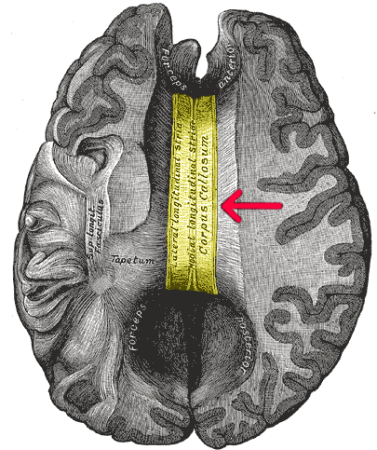Let’s take a look inside our heads for a second.
Congratulations! You have a brain inside there, whose structure can be split into two halves, or hemispheres—the left and right sides of your brain, which are in charge of logic and emotions respectively. It’s commonly thought that one hemisphere dominates the other, dictating the personality and tendencies of a person, but how much of this is true? How can we learn more about the relationship between the right and left hemispheres of the brain?
Well, it’s pretty easy. Just chop the brain in half!
That’s exactly what Roger Sperry, an American neuropsychologist and neurobiologist, did in his experiments from 1959 to 1968. In hopes of learning more about the relationship between the left and right hemisphere, he cut off a thick bundle of nerve fibers linking the two hemispheres together: the corpus callosum. This bundle is like a freeway for information to travel from one hemisphere to the other. It turns out, the two hemispheres don’t necessarily have to communicate with each other in order for animals (like humans or monkeys) to function. The first of many of his experiments, funnily enough, started with cats!
The optic chiasm (eye fibers in the brain that convey visual information to the opposite visual field), in nine cats was cut, meaning that light from one eye will only be processed by the corresponding cortex. One of the eyes was covered using an eye patch, and two doors were placed in front of each cat, where two different shapes were depicted on them. One shape led to cat kibble, while the other led to a startling electric buzzer. Each eye was trained to recognize food under each block, but with both eyes uncovered, strangely enough, cats were unable to remember which was which and selected both blocks equally.

This is due to “brain asymmetry” or lateralization: the idea that different parts of the brain do different things and each have their own unique functions. Individual lateralization increases cognitive capacity, the capacity of how much information your brain can handle at a given time, which explains handedness in species and why humans are able to multitask. You can read this article for more information about lateralization and cognitive capacity!
When the brain is severed, what’s actually being cut off completely is the corpus callosum in what’s called a commissurotomy. When the corpus callosum is only cut, or sliced, it’s a callosotomy, or “split brain surgery” which is used as a means of treating epilepsy. What’s interesting is that consciousness in split-brain patients is also split if each of their cortical hemispheres has its own conscious agent.
Theories have emerged regarding conscious awareness as a whole. The two hemispheres can be thought of as two separate conscious parts that work and communicate with each other (even when corpus callosum is absent!). Still, more research needs to be done. If these theories are true, each hemisphere could be capable of making independent decisions separate from the other, disproving the “unity of mind theory” that both parts of the brain cannot do anything independently. But, that’s just a theory, a brain theory.
With emerging brain theories and treatments for neurological issues, it’s clear that there’s still so much to know and learn about the brain. What’s most gratifying, however, is that you now know how yours works.

